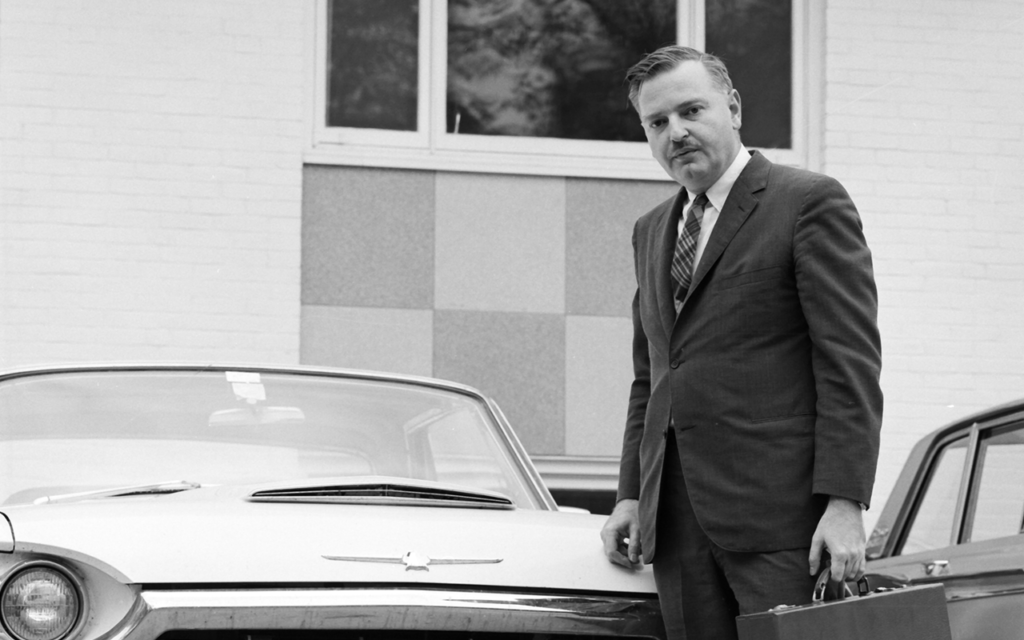
There were no female students at Dartmouth for all my four years, from 1948 to 1952. Women did not start to arrive until the late 1960s, with a few exchange students, mainly theater majors who could fill female roles in stage productions. Coming back to reunions, it was not new buildings that made things look different but seeing women in the bookstore. Wow!
We were of a time when students could only find nearby dates with nurses at Mary Hitchcock Hospital or students at Colby Junior College. It took six hours or more for my 1939 Oldsmobile to make it to Ithaca on the Cherry Valley Parkway (before there was a New York Thruway) for dates with the Cornell freshman who became my wife.
Fifty years later, we take women students for granted.
Our class secretary Bill Montgomery ’52 put me in touch with a member of the pioneering Class of 1976, the first four-year Class with women. Martha Beattie remembers sitting in the balcony of Webster Hall for Convocation. President John Kemeny came to the podium and, with a hint of his Hungarian accent, addressed the students: “Men … and Vimen of Dartmouth.” Hooting and hollering broke out. It set the tone for a new Dartmouth.
Beattie, later vice president of alumni relations, says the novelty of the first co-ed class and the gift of making history carried the women through any problems.
“We had low expectations. We were aware that Dartmouth had been all male for 200 years. But there was real enthusiasm, and everyone was so welcoming. I never felt not truly welcome. I wouldn’t have changed one day. It was magical.”
Bringing coeducation with “The Dartmouth Plan” was but one of President Kemeny’s landmark achievements. A giant in computer history as co-inventor of the computer language BASIC, he was a sure hand as leader, keeping the campus cool when the Kent State shooting spread unrest during the Vietnam War. The Indian symbol was retired on his watch.
But it was the admission of women that changed the college forever.
Beattie was surprised by how much had been done to make women welcome. She recalls Pete Gardner recruiting women on the Green for crew. “We learned after the fact that he was coaching on his own time and not being paid. There was a generosity of spirit.”
The novelty of co-eds made an easier path, she adds. “You’re the first woman to do … (whatever).” Beattie served as stroke for the crew on the Charles River, where the crowds shouted “Dartmouth women. YEAH!”
One female professor advised an alumni group that, with coeducation, “it sure smells better around here.”
When female students were surveyed about whether to change “Men of Dartmouth” in the college song, a majority voted not to change it. Let the Dartmouth family see how much Dartmouth women had to offer. Said one, “It’s fine with me if these guys want to say they have rocks in their brains.” You had to have a sense of humor, says Beattie. (However, the alma mater’s opening lyric was ultimately changed, in 1988, from “Men of Dartmouth” to “Dear Old Dartmouth.”)
My classmate John Rosenwald gave me a story about Kemeny that was told at his memorial in Rollins Chapel. When he was being interviewed by the search committee to be Dartmouth’s 13th president, the committee decided that Kemeny was the right choice and asked if he had any final questions or comments. He answered:
“I want the committee to know that I am an avid golfer. If you offer me this position, I intend to play twice a week and will continue as president.”
Taken aback by this reply, the committee huddled but quickly reaffirmed the decision to offer Kemeny the job. He then threw them a curveball:
“Now that that is agreed, I’m not a golfer. I’m a teacher. If you offer me this position, I intend to teach twice a week as president.”
Beattie saw him as a teacher in her 8:00am Honors Calculus class. Awed at being taught by the leading mathematician in the country, she came to appreciate how this “soft-spoken, shy” man would explain a complex issue. When students were stumped by a tough question, “he would blame himself for not teaching the concept well enough so we could understand it.”
Kemeny so loved the College that when it launched a campaign for capital gifts he remarked to Rosenwald, then chairman of the Board of Trustees: “Jean and I are not wealthy, but we want to be part of the campaign. Our most important asset is our home, which we would like to bequeath to the College.”
Women in Dartmouth’s first co-ed class revered Kemeny. Seeing his Thunderbird in a parking lot, they would pat the BASIC license plate the way students rub the nose of Warner Bentley’s bust in the Hopkins Center. Beattie affirms, “He was our president.”
The student body is now nearly half female and the “Dartmouth Plan” is still in effect, as John Kemeny planned it a half-century ago.
Kenneth Roman ’52 was Editor-in-Chief of The Dartmouth in 1951-52.

Be the first to comment on "“He Was Our President”: Remembering President John Kemeny and the Admission of Women, 50 Years Later"